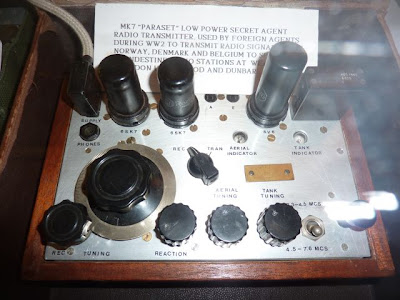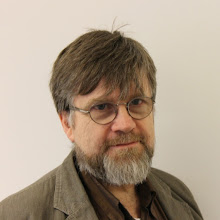Having recently finished reading B Jack Copeland
et al's book
"Colossus: The secrets of Bletchley Park's code-breaking computers" (
which get's a very enthusiastic "thumbs up" from me) you will imagine my delight to have found myself within striking distance of
Bletchley Park today.
The XYL and I set off on the forty minute drive not knowing we would arrive to find a special
"Churchill Weekend" event at BP, in which many veterans were gathered for the unveiling of a new monument (
a stone in front of the mansion, "representing" the stone on which Sir Winston stood as he addressed those serving at Station X). Here are some of the dignitaries and "top brass" gathering outside the mansion...

The Rolls Royce is the particular car which Winston used to commute from London to
Chartwell.
We started our visit by paying homage to the "Bombe", Alan Turing's development of the mechanical device first built by Polish Codebreakers to break Enigma keys...

Then we visited
Tony Sale's rebuild of the Colossus computer. Looking back at the experience, I realize that I'd strolled casually past some nice radio gear (
including an array of AR88's like mine), parts of "Heath Robinson" (
Colossus' electro-mechanical predecessor) and the duplicate "Tunny" machine, (
on which the actual de-cyphering of Tunny/Lorenz traffic could be performed once Colossus had worked its magic) almost without pause. Before I knew it I was there, inside an un-assuming building, staring at the Holy of Holies.
Make no mistake - this is IT. This is the Garden of Eden. This is the singular point at the origin of the modern world. Yet I'd drifted up to it without all the preparation that should be made before gazing on the face of Glory...

Slowly, it all began to sink in. I attuned to the heartbeat of the beast as it reset counters between each scan of the message on the "near" drive of the "bedstead". I started to see the elements that I'd only read of in "Scripture" - the optical reader (
which read the bits from each of the five channels or "impulses" as they were then named), the span indicators (
which allowed cryptanalysts to start and stop computation at fixed points within a message), the switches for encoding "ordinary" Boolean operations (
this is a rebuild of a Colossus II) and the teletype machine which recorded results.
Here it was - here I was. Standing in front of the work of man (principally the work of
one man -
Thomas H Flowers) which encapsulated and transcended the work of all humankind. Sacrament in reverse.
After conversation with one of the high priests (/technicians) who serve at this altar, I was given a gift I will treasure - a piece of tape that had been through the machine...

I read the first few characters (from the"torn" X at the left hand extreme) as
'X/(lf)/OUWGNZQLI(lf)/N(cr)NSZCTK/++L(sp)(lf)L...'
in which I've stayed in letter shift of the Teleprinter Alphabet and used (lf) to denote "line feed" etc. Gobbledegook!
It would have been enough to leave Bletchley at this point - but there was more to see...
In another unassuming building - "Hut 1" - is housed a collection of
Diplomatic Wireless equipment of international importance. It is curated (and part-owned) by David Wright, g3zpa, who showed me around. I was particularly keen to see the original Parasets - there is both a metal boxed version and the wooden model, seen here...

David made some gracious comments about the photographs of my
replica Paraset. He also allowed me to take some key dimensions of the Whaddon MkIII transmitter - perhaps that will be a future project!
David reminded me that the book
"Secret Wireless War", by Geoffrey Pidgeon was available at the shop and I was pleased to get a copy.
To end a great visit, we were treated to a fly-past from Lancaster PA474 from the
Battle of Britain Memorial Flight, which made three passes over BP...

All the ingredients of
"A Grand Day Out".
...-.- de m0xpd


















